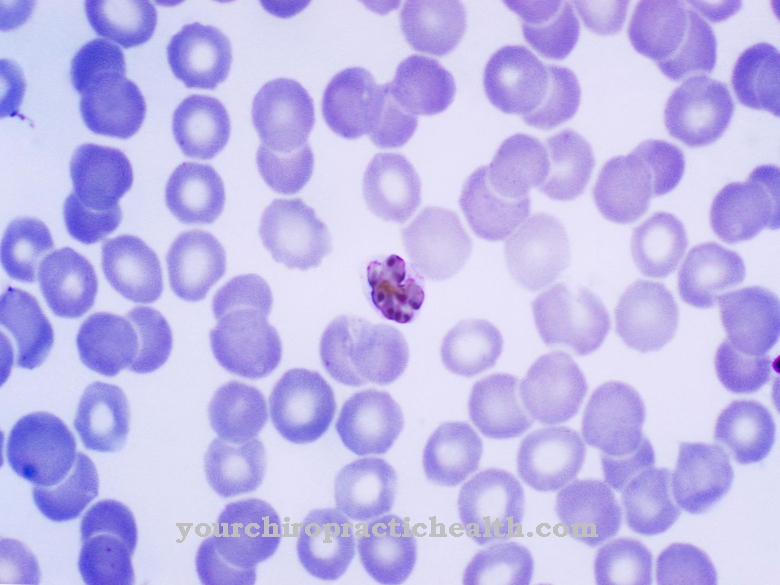Mushrooms can be responsible for various diseases and disease symptoms. They can enter the body through an unsanitary environment or, if present, start to cause damage in the body when the immune system is weakened through massive multiplication.
What are mushrooms?
Fungi are eukaryotic creatures. This means that their cells, for example in contrast to those of bacteria, have a nucleus. They also have mitochondria and a so-called cytoskeleton (network of proteins in the cytoplasm).
Fungi are not counted among animals or plants. It differs from plants e.g. their metabolism and the lack of chlorophyll. They take in nutrients by utilizing biomass like animals. They differ from animals on the one hand in that they cannot move and on the other hand in their cell structure. Like plants, they have a solid cell wall. Their reproductive behavior is also different from that of animals.
Mycology, the science of fungi, distinguishes between unicellular and multicellular fungi. Yeasts, for example, which can be responsible for various diseases in humans, belong to the unicellular fungi.
Occurrence, Distribution & Properties
Like some other fungi, yeast can be found in human bodies without necessarily causing disease. However, depending on the condition of the fungus carrier, they can become pathogens, for example when weakened or after an operation.
Mold that is absorbed through breathing, mucous membranes or contact can develop in moldy foods, in the building fabric or in damp areas (e.g. bathroom mold).
Yeasts found on human mucous membranes can be transmitted through kisses and sexual intercourse. One of the most common fungal diseases, athlete's foot, can be transmitted through contact with infected areas of skin or by walking unprotected on contaminated surfaces. This can e.g. happen in swimming pools. A damp climate on the foot helps the fungus develop. Therefore, even after contact with the filamentous fungus, rigorous drying of the feet can counteract an outbreak of the disease.
In the building fabric, moisture is one of the causes of the spread of mold. Pipe leaks, leaky walls, poor insulation, etc. a. promote the development of dangerous fungi, which are seriously detrimental to health and in the worst case can even have fatal effects.
Mold can also form on old or incorrectly stored food. Moldy food should therefore be disposed of. In exceptional cases, such as a small mold stain on fruit jelly that consists of more than 50% sugar or sugar substitutes, the area can be generously cut away and disposed of, but the basic rule is that visible mold stains on food surfaces are caused by an even larger mold infestation Testify inside that one cannot necessarily see.
Meaning & function
Fungi can be found almost everywhere in mostly invisible form. They also exist in the human body on mucous membranes, on the skin and in the intestines. They belong to the very own flora of humans. Normally, they do not affect your well-being. A whole human life can go by without a fungal disease occurring because a healthy immune system can cope well with the fungi that are present in a healthy body.
That can change if factors encourage the fungal spread to "bloom". A weakened immune system, obesity, diabetes, chemotherapy, taking antibiotics, taking antidepressants, the weakened state after operations, HIV, etc. belong to it. Even taking birth control pills increases the risk of fungal infections. It causes the mucous membranes in the body to become more permeable and provide a more sugary climate. Both of these make it easier for mushrooms to settle.
A fungal infection, also called mycosis, can be tricky. It often weakens an already impaired organism. It is treated with antifungal drugs. However, since fungi have significantly more complex structures than bacteria, there is not a large selection of effective drugs for antimycotics, such as for antibiotics. Since fungal cells are much more similar to the structure of human cells than, for example, bacterial cells, it is much more difficult to develop drugs that target the fungi but leave the human body undamaged.
Illnesses & ailments
Common fungal diseases are, for example, skin fungus, athlete's foot, fungal infections on the oral mucosa or in the genital area. Antifungal ointments, creams or sprays usually help here. Treatment can be done locally.
So-called systemic mycoses, on the other hand, mean that the pathogen fungi have spread through the bloodstream and attacked organs. These diseases can be very severe and fatal. Usually they affect people with a severely weakened immune system. Existing fungi use the weakening to spread more.
However, there are also pathogens that attack healthy people and can cause massive damage to the organism without any prior stress. However, these rarely occur in Europe.
In addition to carcinogenic effects, toxins emanating from mold can also have neurotoxic effects, damage the genetic material, fetuses and the immune system, trigger allergies, damage organs and impair the metabolism. It is therefore of great importance to watch out for mold growth both in the food and in the living area and to take countermeasures immediately or not to turn a blind eye to moldy food.























.jpg)



